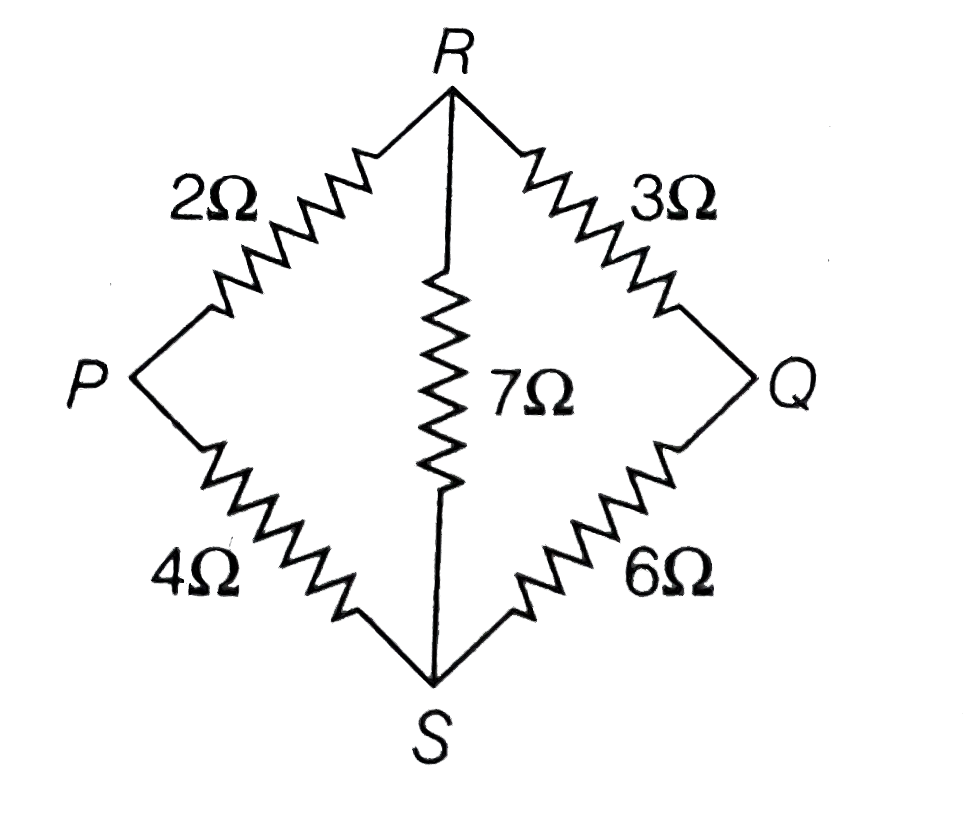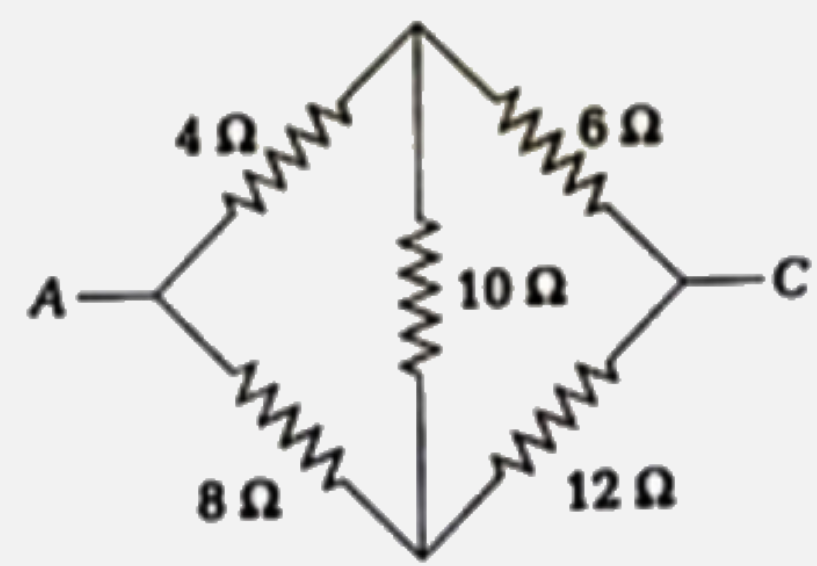Idnetical resistor each of resistance r are connected as shown in figure. Calculate equivalent resistance between A and E.
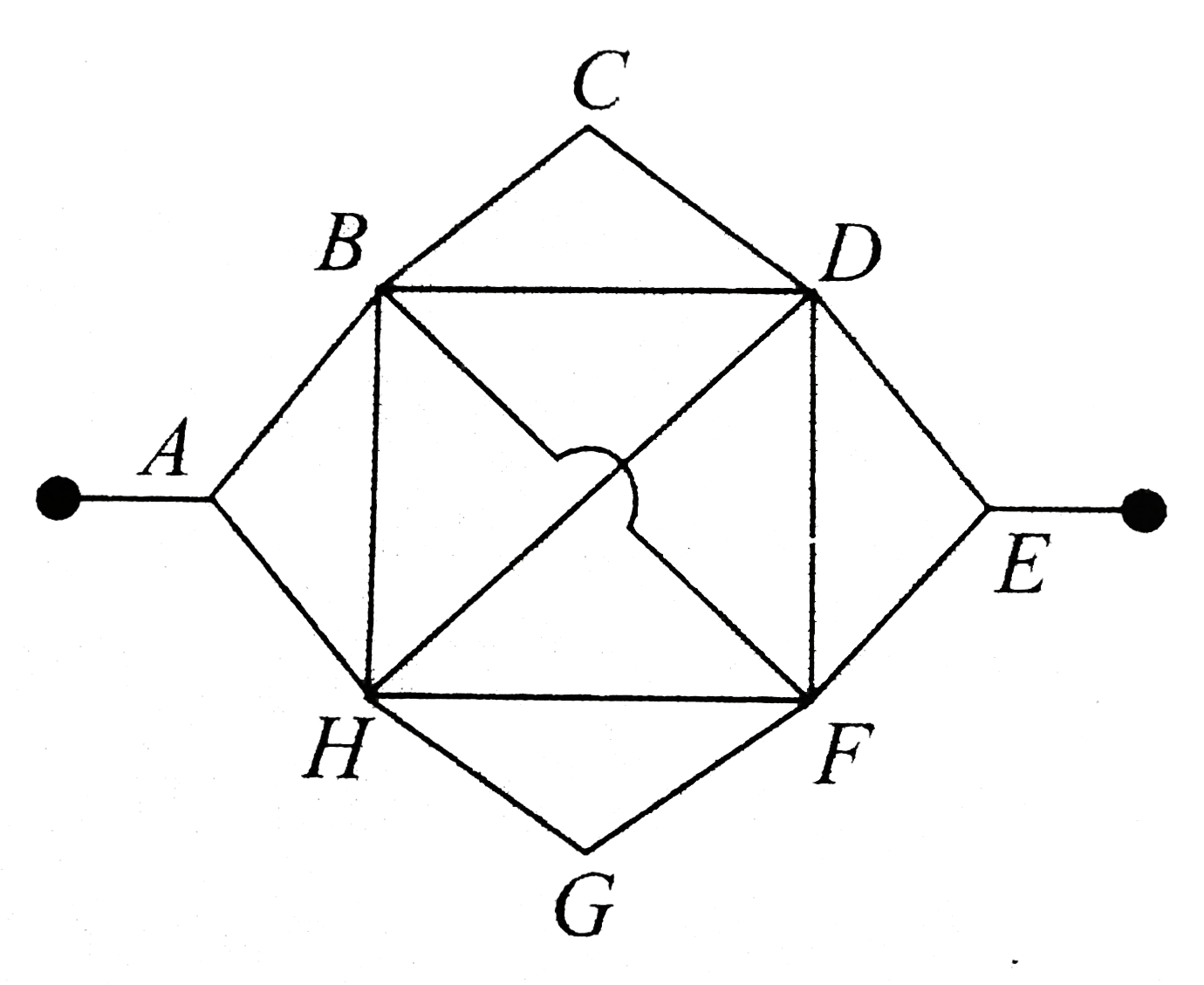
Video Solution
Text Solution
Let the potentials of nodes A and B be V and O, respecitvely,
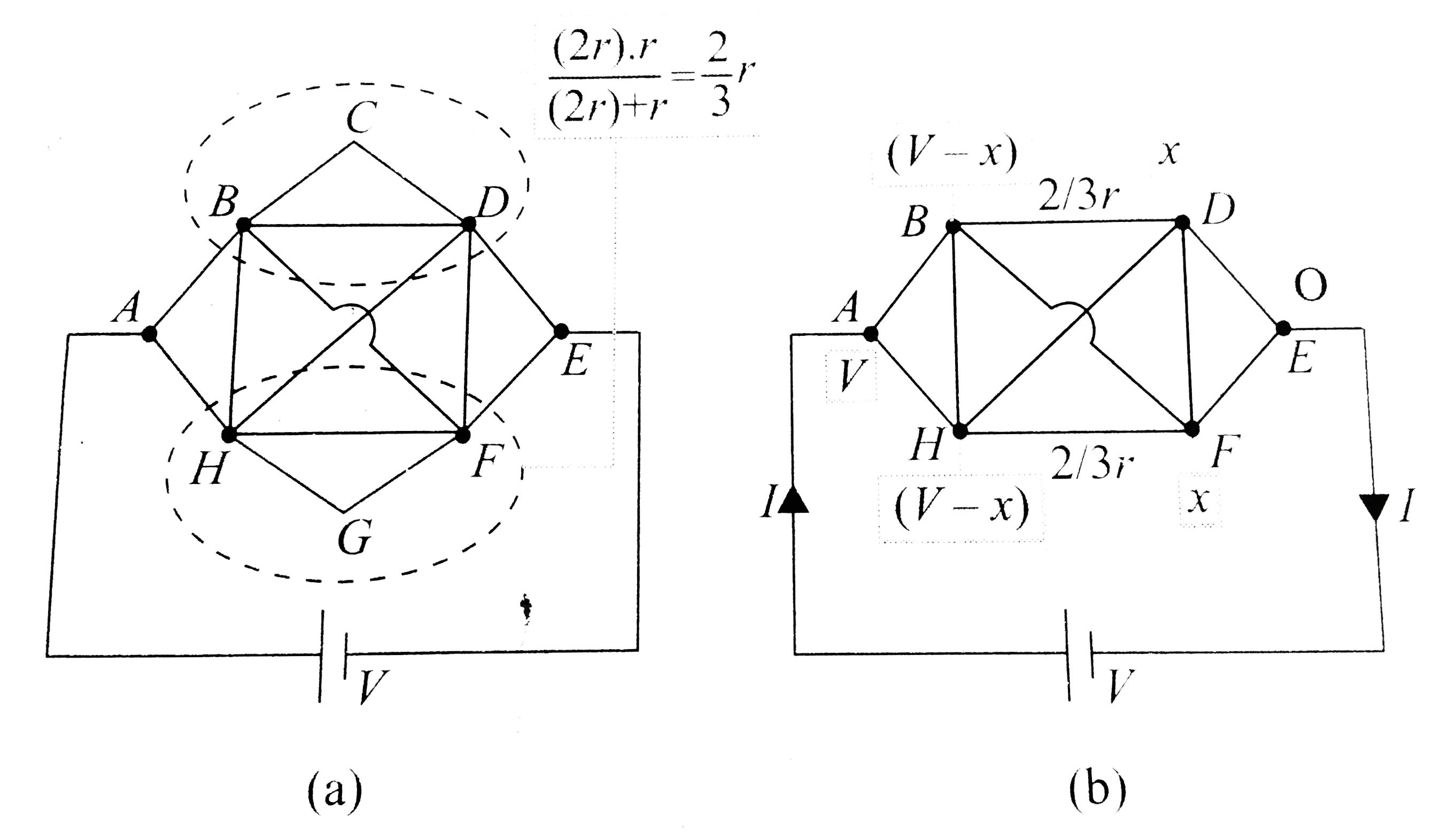 ,
, 
from symmetry, it is clear that the current in the resistance
AB and AH will be same. Similaryl , the current in resistances
DE and FE will be same hence potential differnce across
these resistances will be same.
Let the potentials of point D and F be x, then the potentials
of nodes B and H will be (V - x). the potential difference
across the resistances BH and DF is zero. the net resistacne
can be ginven as RO(eq)=V/I
Nodal equation at A is
1=(V−(V−x)r+V−(V−x)r)=2xr
Nodal equation at B is
(V−x)−Vr=(V−x)−x(2/3r)+(V−x)−xr
From (i) and (ii),
I=2r(512V)orVI=6Ir=Req
Method:2 if the battery of emf V is connected across A and E, cirucit beomes as shown in fig there fore currents in AB, AH, DE, and FE are identical (I_1 say)
Current is BD and FE are indential to each other (I2,say).
Currents i BF and HD are idnetical to each other (I3say) no
currents flows through BH and DF hecen currents throgh
differents resistors will be as shown in fign applying Kirchhoff's voltage law at junction B, we get
I1=I2+I3(i) <br>Apply∈gKirchhoff'svo<a≥lawonmeshBFHB,we≥t<br>I_3r - (2)/(3)r I_2 = 0 or 3I_3 = 2I_2 (ii)<br>Nowappl∈gKirchhoff'svo<a≥lawonmeshAHFEJKA,<br>we≥t<br>I_1r +I_2((2)/(3)r) + I_1r- V = 0 (iii)<br>FromEqs.(i)and(ii)we≥tI_2 = 1.5I_3 and I_1 = 2.5I_3<br>Substitut∈gthesevalues∈Eqs.(iii)we≥t,<br>6I_3r= V or (V)/(I_3) = 6r<br>TotalcurrentdrawnombaeryisI = 2I_1 =5I_3Therefore,<br>≡a≤ntresistanceis<br>(V)/(5I_3) = (1)/(5)xx6r = 1.2r
|
Updated on:21/07/2023
Topper's Solved these Questions
- BOOK - CENGAGE PHYSICSCHAPTER - ELECTRIC CURRENT AND CIRCUITEXERCISE - Exercise 5.128videos
ELECTRIC CURRENT AND CIRCUIT
- BOOK - CENGAGE PHYSICSCHAPTER - ELECTRIC CURRENT AND CIRCUITEXERCISE - Exercise 5.250videos
ELECTRIC CURRENT AND CIRCUIT
- BOOK - CENGAGE PHYSICSCHAPTER - ELECTRIC CURRENT AND CIRCUITEXERCISE - Interger8videos
ELECTRIC CURRENT AND CIRCUIT
- BOOK - CENGAGE PHYSICSCHAPTER - ELECTRIC CURRENT & CIRCUITSEXERCISE - Kirchhoff s law and simple circuits15videos
ELECTRIC CURRENT & CIRCUITS
- BOOK - CENGAGE PHYSICSCHAPTER - ELECTRIC FLUX AND GAUSS LAWEXERCISE - MCQ s38videos
ELECTRIC FLUX AND GAUSS LAW
Similar Questions
Knowledge Check
- Question 1 - Select One
Seven resistances are connected as shown in the figure. The equivalent resistance between A and B (in Ω) is
 A3ΩB4ΩC4.5ΩD5Ω
A3ΩB4ΩC4.5ΩD5Ω - Question 2 - Select One or More
Inside a supeerconducting ring, six identical resistors each of resistance R are connected as shown in figure. The equivalent resistances.
 Abetween 1 and 3 is zero.Bbetween 1 and 3 is R/2Cbetween 1 and 2, 2 and 3, 3 and 1 are all equalDbetween 1 and 2, 2 and 3 , 3 and 1 are all not equal.
Abetween 1 and 3 is zero.Bbetween 1 and 3 is R/2Cbetween 1 and 2, 2 and 3, 3 and 1 are all equalDbetween 1 and 2, 2 and 3 , 3 and 1 are all not equal. - Question 3 - Select One
A number of resistors are connected as shown in the figure. The equivalent resistance between A and B is
 A6ΩB12ΩC9ΩD15Ω
A6ΩB12ΩC9ΩD15Ω
Five resistors are connected as shown in figure. Find the equivalent resistance between the points B and C.
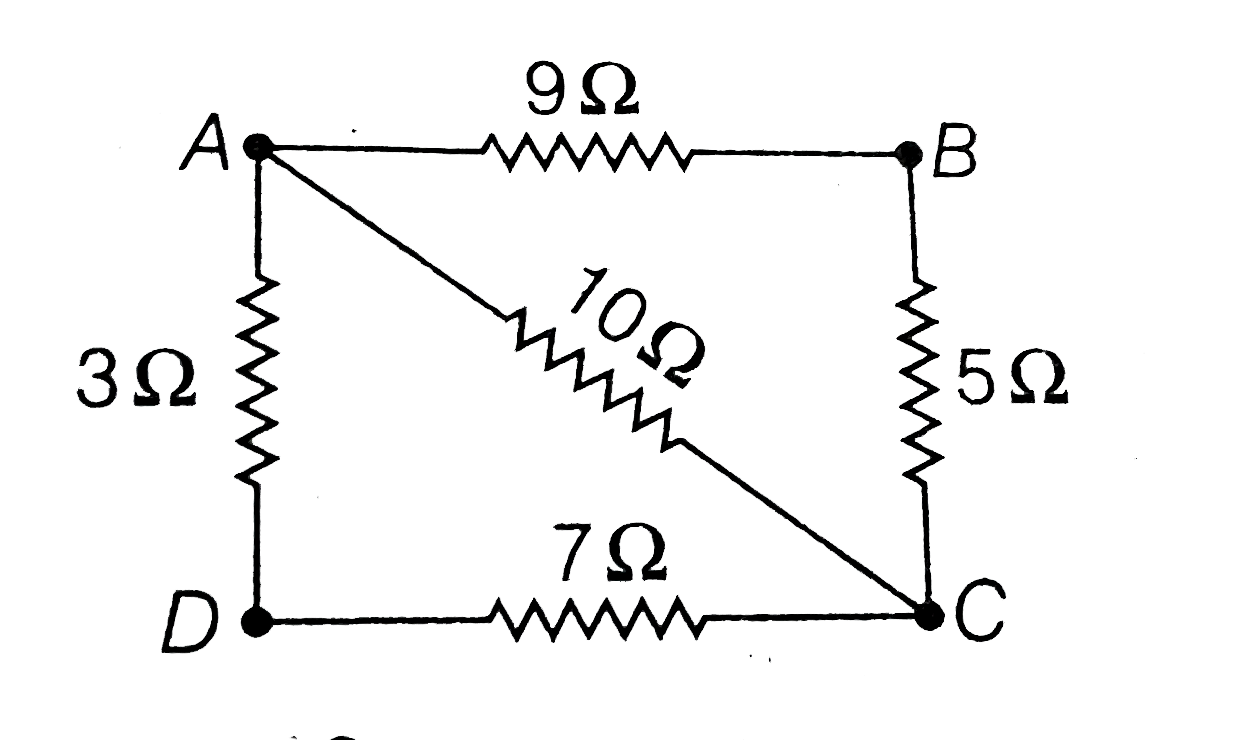 View Solution
View SolutionFive resistors are connected as shown in the diagram. The equivalent resistance between A and B is
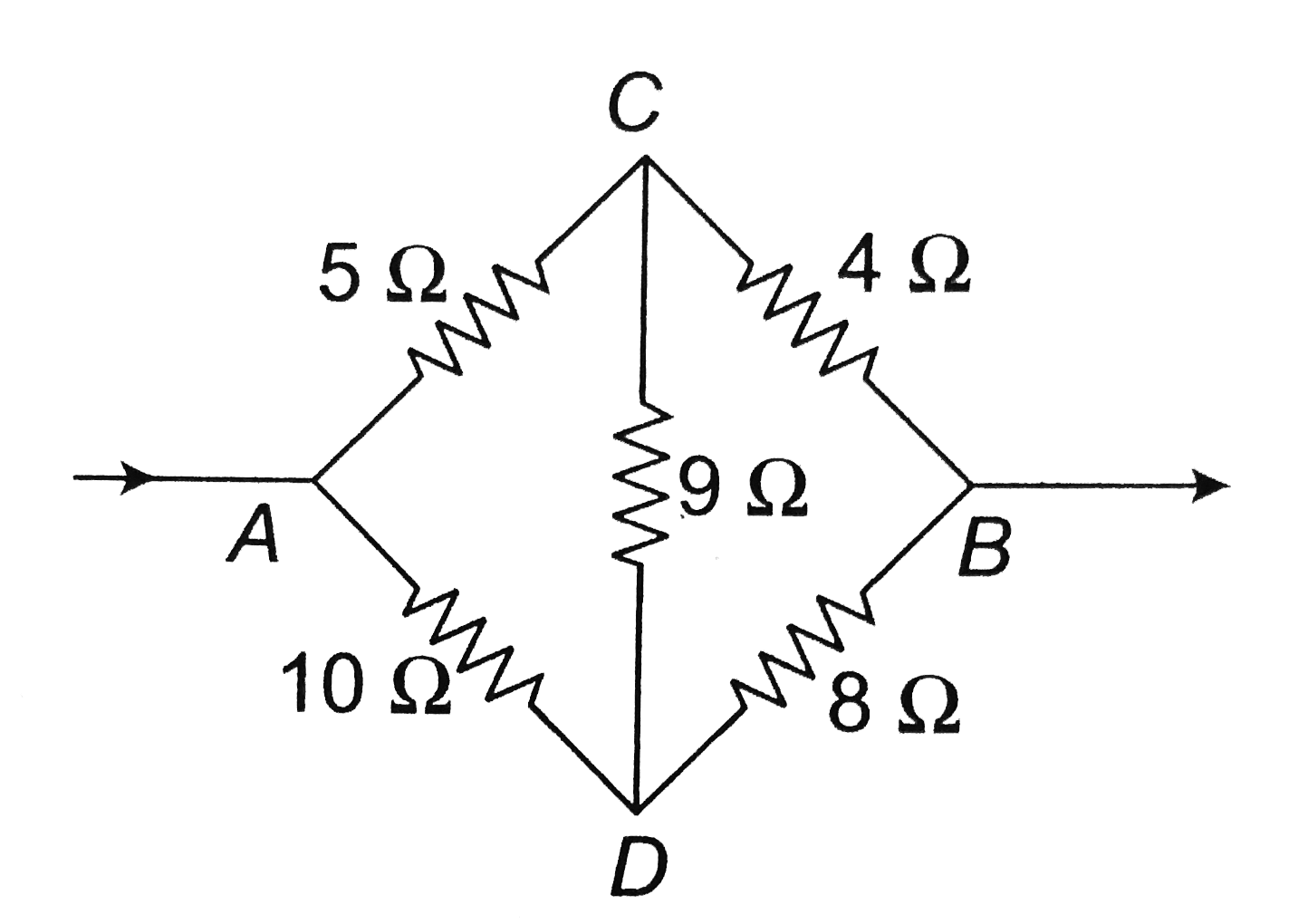 View Solution
View SolutionThree equal resistors, each equals to r are connected as shown in figure. Then, the equivalent resistance between points A and B is
View SolutionEight resistances each of resistance 5Ω are connected in the circuit as shown in figure. The equivalent resistance between A and B is
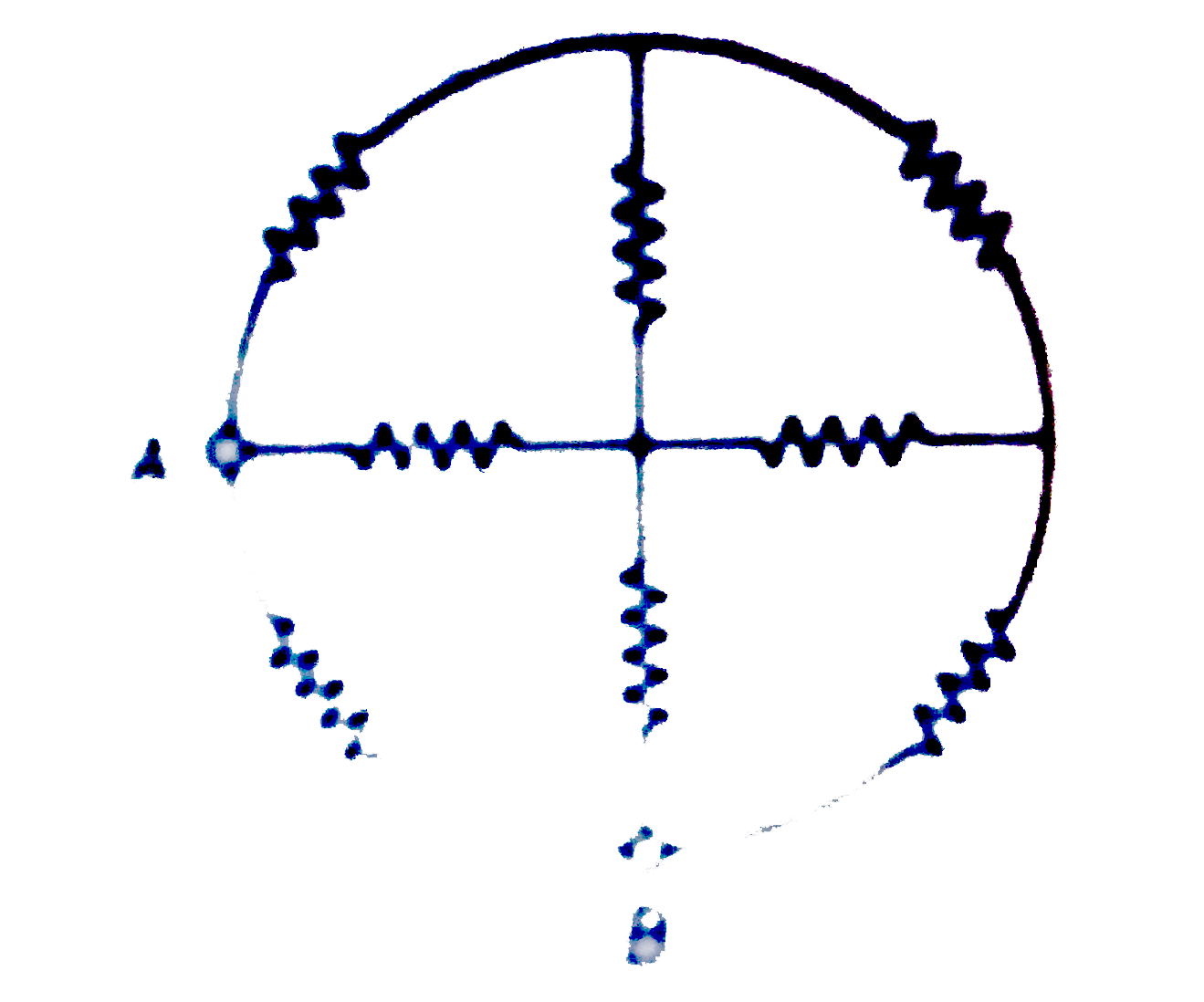 View Solution
View SolutionNine resistors each of resistance R are connected in the circuit as shown in fig. The net resistance between A and B is
 View Solution
View Solution


